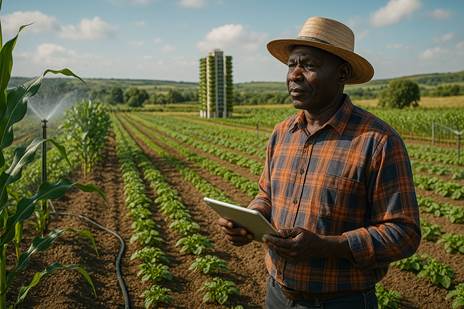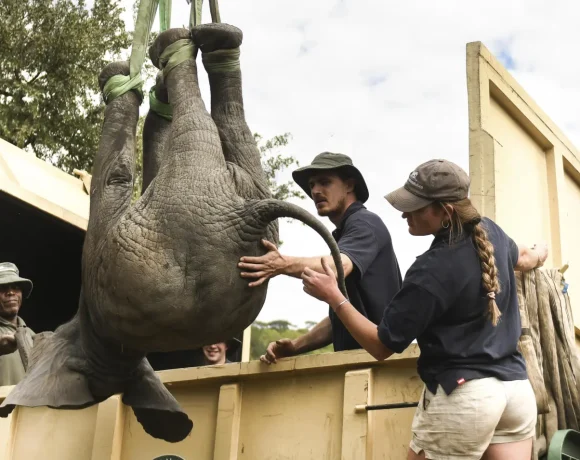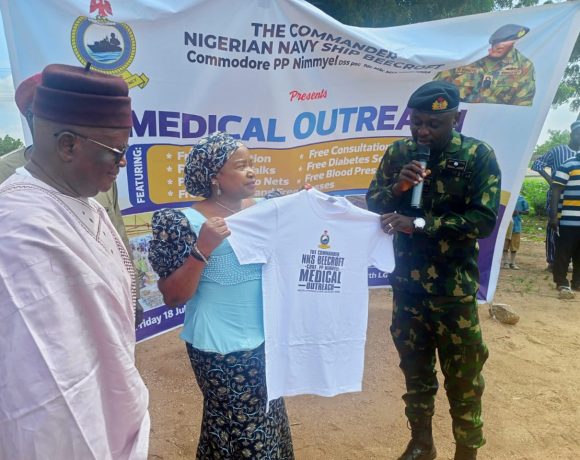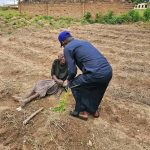The Future of African Agriculture: From Survival to Smart Economy

Israel
Opinion by Samuel Shay, Entrepreneur and Senior Economic Advisor to the Abraham Accords Treaty.
For centuries, agriculture in Africa has remained largely unchanged. Across vast regions, farmers continue to depend on methods and tools passed down through generations practices suited for small, traditional societies but no longer sustainable for a continent of 1.4 billion people facing accelerating climate stress. What was once a source of stability has become a source of vulnerability.
From Tradition to Systemic Crisis
In most African countries, farming still relies on natural rainfall rather than engineered irrigation systems. Farmers live by the rhythm of the sky: when rain falls, crops live; when it does not, entire regions suffer. But climate change has rewritten the rules. Countries that once enjoyed rainfall every few days now experience drought cycles that stretch for weeks or months. The cocoa plantations of Ghana and Côte d’Ivoire, once the backbone of West Africa’s exports, are failing. Mango groves in Kenya and maize fields in Malawi are drying out.
This is not simply an ecological failure it is a failure of adaptation. Africa’s agricultural systems have not evolved in tandem with demographic growth or modern science. There has been little investment in irrigation networks, data systems, or agricultural R&D. Governments treat farming as a social safety net rather than a high – tech economic engine.
Building a Technological Renaissance
To shift from survival farming to smart, data – driven agriculture, Africa needs a continent – wide transformation strategy grounded in five key priorities:
- Water Infrastructure and Controlled Irrigation
- Establish national irrigation grids powered by renewable energy.
- Promote solar pumping, drip irrigation, and micro – irrigation adapted to smallholder farms.
- Introduce water recycling and aquifer monitoring to ensure sustainable use of resources.
- Soil and Climate Intelligence
- Deploy satellite mapping and AI – based forecasting to guide planting schedules.
- Invest in soil analytics labs in every region to test acidity, fertility, and nutrient needs.
- Provide farmers with mobile access to localized data on rainfall and temperature.
- Urban and Vertical Agriculture
- Encourage vertical farming in cities using hydroponic and aeroponic systems.
- Integrate rooftop gardens and container – based farming to supply local markets.
- Use greenhouses that monitor humidity, light, and nutrient levels through IoT systems.
- Education and Agricultural Literacy
- Launch Agricultural Innovation Academies to train young farmers, engineers, and data analysts.
- Provide micro – grants for agri – tech startups developing local solutions.
- Promote gender – inclusive agricultural education programs to integrate women fully into the sector.
- Financing and Market Access
- Create agricultural investment funds backed by governments and gulf sovereign wealth.
- Expand credit and insurance tailored to smallholders through digital banking.
- Build farm – to – market platforms linking farmers directly with buyers and exporters.
Economic and Social Impact
If implemented correctly, this agricultural revolution could triple productivity across sub – Saharan Africa within a decade. Farmers would move from subsistence to commercial production, generating consistent income and reducing rural poverty. Local processing facilities would emerge, adding value before export and keeping profits inside the continent.
Such modernization would strengthen national currencies, reduce dependence on food imports, and create millions of new jobs across logistics, manufacturing, and agrotech services. In turn, this would stabilize rural populations and reduce migration pressure toward urban centers or across the Mediterranean.
Environmental and Climatic Benefits
Smart agriculture is also sustainable agriculture. Efficient irrigation and precision fertilizer use minimize water waste and prevent contamination of rivers and groundwater. Restoring degraded soils through reforestation and crop rotation can combat desertification in the Sahel. Integrating renewable energy into agricultural production solar – powered irrigation, cold storage, and processing can make Africa a model of low – carbon food security.
Policy and Institutional Reform
Technology alone cannot transform agriculture without supportive policy. Governments must:
- Reform outdated land ownership systems to allow secure, transferable property rights.
- Simplify regulations to attract private investment into agro – infrastructure.
- Establish regional Food Security Councils that coordinate trade, research, and disaster management.
- Introduce national strategies that treat food production as part of national security.
Partnerships with countries such as Israel (water innovation), the United Arab Emirates (investment), and the United States (institutional governance) can accelerate this transformation. Regional collaboration through the African Union should aim to create Agricultural Innovation Corridors clusters where research institutes, local farmers, and technology firms work together.
A New Vision for Africa
The transition from survival farming to a smart agricultural economy is not just a technical reform it is a civilizational shift. It represents Africa’s ability to break free from dependency, hunger, and vulnerability. The continent must stop viewing agriculture as an ancient art and recognize it as a strategic industry at the intersection of technology, finance, and sovereignty.
Africa has everything it needs sunlight, fertile soil, youth, and ingenuity. What it must now build is the infrastructure and vision to harness them. The era of praying for rain must give way to the era of designing abundance.
Conclusion: Engineering Abundance
The agricultural transformation of Africa is both a moral and economic imperative. It is about restoring dignity to the farmer, securing the continent’s food future, and positioning Africa as a global supplier of sustainable agricultural goods. When innovation meets the soil, hope becomes harvest.









